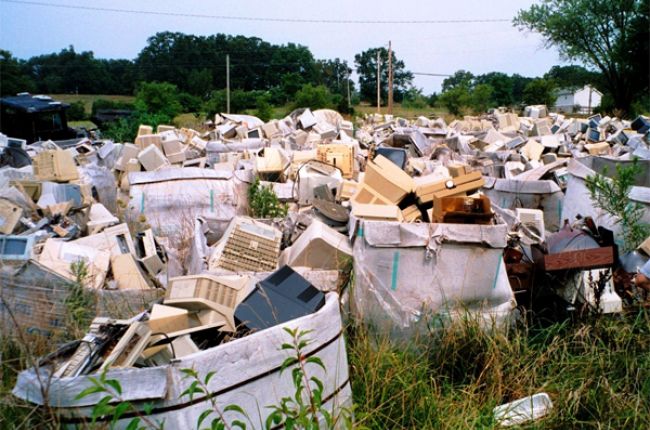
Extracting and processing raw resources (wood, oil, ore) to make usable materials (paper, plastic, metal) requires a lot of energy. Recycling often saves energy because the products being recycled usually require much less processing to turn them into usable materials.
Exactly how much energy is saved depends on the material in question. Let’s take two examples: glass and aluminum.
- Glass is made by melting sand and other minerals at very high temperatures. The molten mixture is then cooled to form glass. The most energy-intensive part of the glass-making process is the heat necessary to melt the mineral mixture.1 Because recycled glass still needs to be re-melted to make new glass products, the energy savings from recycling glass are relatively small – roughly 10-15%.2
- Aluminum is produced from aluminum ore (typically a mixture of minerals called bauxite3), which needs to be extensively processed to isolate the aluminum metal. This processing requires a huge amount of heat and electricity: aluminum production in the United States uses more electricity than any other manufactured product.4 None of this processing is required for recycled aluminum metal (e.g., in the form of cans), which can be simply cleaned and re-melted, saving 94% of the energy that would be required to produce the aluminum from ore.4 In 2018, 3.7 million tons of aluminum were produced by recycling in the United States,5 saving enough energy to provide electricity to 8 million homes.6
The largest energy savings achieved by recycling are generally for metals, which are often easy to recycle and otherwise typically need to be produced by energy-intensive mining and processing of ore. For example, energy savings from beryllium recycling are 80%,5 lead 75%,9 iron and steel 72%,9 and cadmium 50%.10
Although the amount of energy saved depends on the material being recycled, almost all recycling operations result in energy savings.8 In 2014, over 89 million tons of municipal solid waste (food, plants, glass, boxes, cans, batteries, electronics, plastics, etc.) were recycled or composted in the United States, saving over 322,000 GWh of energy11 – enough to provide electricity to 30 million homes.
The Environmental Protection Agency’s iWARM tool allows individuals to estimate the amount of energy saved by recycling common household items (e.g., cans, bottles, plastic bags, paper, cardboard).
For many commonly recycled products, the energy savings also help to make recycling cheaper than extracting and processing raw resources. However, many other costs may also play important roles in the economics of recycling.
References
1 Glass manufacturing is an energy-intensive industry mainly fueled by natural gas Energy Information Administration
2 Energy Implications of Glass-Container Recycling Argonne National Laboratory and the National Energy Technology Laboratory
3 Bauxite and Alumina Statistics and Information U.S. Geological Survey
4 U.S. Energy Requirements for Aluminum Production Department of Energy
5 Mineral Commodity Summaries 2019 U.S. Geological Survey
6 Calculation: (3,700,000 tons alumina recycled)*(23,800 kWh/ton alumina produced from ore)[4]*(0.94 proportion of energy saved by recycling instead of using ore)/(10,399 kWh/houshold per year)7 (assuming U.S. household electricity use was similar for 2017 and 2018)
7 How much energy does an American home use? Energy Information Administration
8 Documentation Chapters for Greenhouse Gas Emission and Energy Factors Used in the Waste Reduction Model (WARM) Environmental Protection Agency
9 Overview of Flow Studies for Recycling Metal Commodities in the United States U.S. Geological Survey
10 Cadmium Recycling in the United States U.S. Geological Survey
11 Advancing Sustainable Materials Management: 2014 Fact Sheet Environmental Protection Agency
Learn More:
- Individual Waste Reduction Model (iWARM) (Web Tool), Environmental Protection Agency
A tool to calculate energy saved by recycling common household items and materials
- Advancing Sustainable Materials Management: 2014 Fact Sheet (Factsheet), Environmental Protection Agency
Factsheet providing details on rates of recycling, composting, and landfilling, including energy savings and energy recovery from waste combustion
- How Do I Recycle? Common Recyclables (Website), Environmental Protection Agency
Information on common recyclable items and how and where to recycle them. Includes paper, batteries, plastics, glass, used oil, tires, lightbulbs, electronics, food waste, and household hazardous waste
- Recycling as a Source of Mineral Commodities (Factsheet), American Geosciences Institute
Factsheet outlining the role of recycling in the supply of metals and other materials, including statistics on energy savings from recycling certain metals



